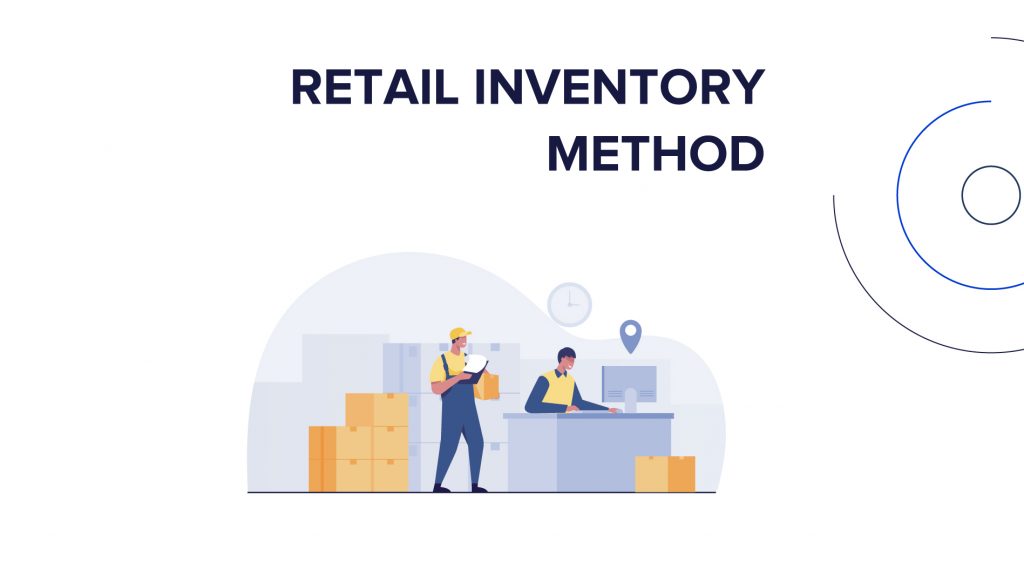It is crucial to be in control and stay up to date about your inventory in order to make informed decisions regarding ordering stock, stocking additional items, and selecting what kinds of things to invest in to boost sales. Manually counting the inventory can be time-consuming and inconvenient when needing to make prompt business decisions. The retail inventory method (RIM) was created to help you with this task.

What Does the Retail Inventory Method Offer?
The retail inventory method (RIM) is an alternate strategy that uses a simple computation to calculate the value of your inventory. It is also meant to indicate how much stock remains within a particular time.
The technique calculates the value of your inventory by comparing the price you bought for the items to the price you sold them for. Note that this strategy isn’t always precise because you can’t prevent losing or injuring a portion of your stock. While the retail inventory method can be efficiently used to expedite a manual inventory count, it cannot replace it. Physical inventory counts or cycle counts should be part of your inventory management plan. This will ensure the precise structure of your year-end financial statement.
How to Estimate Your Inventory Value with RIM?
To estimate the retail inventory method, you may use the following steps. First, you will need to find the cost to retail ratio by dividing the cost price by the retail price. Find the cost to retail ratio formula below:
Cost/retail price multiplied by 100 = Cost to retail ratio
Next, you will need to determine the value of goods available for sale. For that, you will need to add the initial inventory value to the purchase price.
Initial inventory cost + Purchase cost = Cost of items available for sale
Once you figure out your cost of items available for sales, you will need to find your cost of sales by counting them and then multiplying the number by the retail price percentage.
The volume of sales x Retail price percentage = Cost of sales
Finally, to get your ending inventory, you will need to subtract the cost of sales from the price of products offered for sale.
Cost of items available for sale – Cost of sales = Ending inventory
What Are the Advantages of the Retail Inventory Method?
Time Efficiency
RIM allows you to count your stock at any moment without spending extra time and resources examining invoices and transactions. However, it can be challenging to coordinate inventory counts and calculations across stores if you work in multiple stores. Therefore, the retail inventory method is perfect if you need to swiftly and smoothly calculate your inventory.
Easy to Apply
RIM is a realistic strategy that may be applied to any size or style of retail operation. You don’t need to be inventory management or accounting expert to get it precisely.
Reduces Costs
The retail inventory method is simple, quick, and practical. It allows you and your team to focus more on customer experience and sales. Moreover, with the retail inventory method, you can avoid additional costs if your personnel is required to count inventory for lengthy periods.
Who Can Benefit from RIM?
It is essential to understand that RIM can be especially effective if you are a multi-store retailer, a high-volume wholesaler of similar products, keep your inventory in a warehouse, consistently use markups, etc.
Multi-Site Retailers
Suppose you have a lot of shop locations. In that case, RIM is a terrific method to obtain a rapid overview of your inventory across all of them without physically counting each stock item and maybe disrupting company operations. Furthermore, as the cost of items in your warehouse will usually stay consistent, you will be able to get precise RIM statistics.
Retailers Who Keep Their Markups Consistent
The retail inventory approach is most effective for companies that sell items with a stable cost-to-retail ratio. In other words, your markups should be reasonably consistent across all items. The retail inventory approach is suitable if you’re a specialty store that buys things at similar prices and applies the same markup to all or most of your products. However, it is also essential to consider that this strategy may not be the best if you sell a wide range of products across numerous categories with widely disparate markups.
Retailers Who Don’t Have Many Sales
The retail inventory approach is an excellent choice if you run a firm with few to no sales promotions. In fact, you don’t have to worry about inconsistencies caused by irregular markups.
Wholesalers that Sell Identical Items in Huge Quantities
Suppose you sell significant amounts of your products to other stores and all of your items have the same or comparable markups. In such cases, the retail inventory technique is an excellent approach to save time on physical inventory counts.
Level up with new modern inventory management systems!
With modern inventory management software, you can have complete control over your inventory, saving your valuable time and resources. Check functionally advanced inventory management eSwap! It can fully understand your inventory values at each location, incomings, inventory moving between multiple locations, and how many items you have in stock. Moreover, eSwap’s multi-channel inventory management system allows you to control your inventory across multiple channels with high-quality analytics reports, including detailed sales, purchases, and returns. Start your inventory management by signing up for a free 14-day trial.







